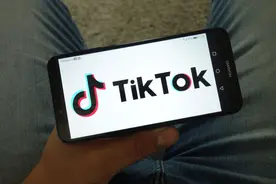In a video widely circulated on the Internet, Musk made no secret that he would directly "copy WeChat".On October 26 local time, Musk walked unsteadily into Twitter headquarters holding a sink.Later, he wrote in his video tweet, "Let that sink in." One day later, Musk officially became the new owner of Twitter.Looking back on this acquisition, the process can be described as eye-catching.Musk first proposed the acquisition and then announced its termination.Twitter first announced the launch of the "poison pill plan" to resist the acquisition, but then said that it had reached an agreement with Musk to accept the acquisition.Later, the two sides once wanted to go to court, but when the court was about to open, Musk proposed to promote the transaction at a price of $54.2 per share.When people thought that the big play was coming to an end, the sequel came again: Musk began to promote "996" in a high profile, and started an internal story......01 On April 14 this year, Musk publicly expressed his intention to buy Twitter.On the same day, he wrote a letter to the chairman of Twitter and disclosed the content through the Securities and Exchange Commission (SEC).This letter has only four paragraphs, which are very meaningful.The value of the first paragraph is: "I want to buy 100% of Twitter's shares, because it has the potential to become a platform for global freedom of expression." The second paragraph showdowns: "Twitter's current situation is not very good, and I want to be the leader of Twitter." The third paragraph is sweet dates+sticks: "I want to use cash to buy all of Twitter's shares at 54.2 dollars per share (about 400 yuan).If not, I will reconsider my shareholder status." As we all know, Musk was already the largest shareholder of Twitter, holding 9.2% of shares.He used the first half of the third paragraph to indicate that "my purchase price has exceeded the original purchase price by 54%, and the total purchase price has reached $44 billion", which is sweet dates.Later, he used the second half to say, "If the acquisition fails, I will sell Twitter shares and short Twitter's share price." This is a big stick.The fourth paragraph is brief and concise: "You can't do it, and I will explore the potential of Twitter." Faced with the acquisition of Musk, Twitter made a defensive gesture - promoting the "poison pill plan".The plan sets that when a party holds more than a certain proportion of the company's shares, it will automatically issue new shares at a low price, so that the acquirer's equity will be diluted again and again.But only a few days later, Twitter announced that it had reached an agreement with Musk to sell Twitter at a price of $54.2 per share and $44 billion.It was supposed that the acquisition would end, but a new round of competition between the two sides was staged.On May 13, Musk stopped the acquisition due to the number of false users.In the following two months, the two sides bickered over the issue of data release.Until July, Musk officially announced to stop the acquisition.But at this time, Twitter stopped.In the same month, Twitter formally sued Musk, asking him to execute the original acquisition agreement worth 44 billion dollars, and specifically emphasized that the reasons for Musk to stop the acquisition were all "excuses".So far, it seems to outsiders that the tug of war between the two sides has taken on the attitude of "Musk doesn't want to buy, but Twitter is eager to sell".But is that really the case? According to American media, Musk is under heavy pressure
-
Home
-
Product
SolutionsmanagementUnified management of multiple mobile phones and accounts
Marketing automationUse scripts instead of manual automation to run APP applications
Self-developed scriptJavascript can be used to develop all mobile terminal automation operations
SolutionsData monitoringMulti-dimensional monitoring account and peer online red data
analysis reportMulti-dimensional analysis report of data
-
About






Comment Cancel reply